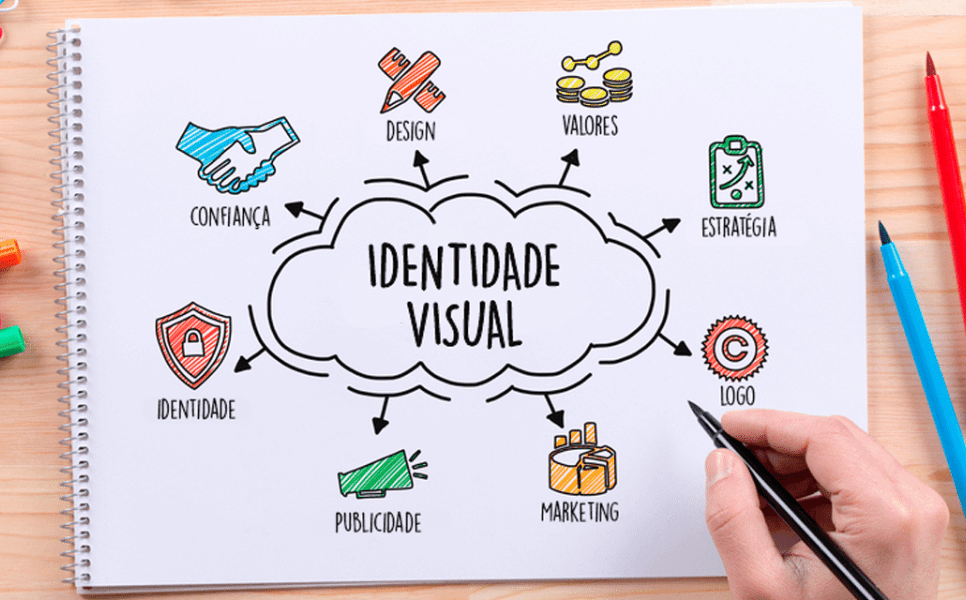A brand identity is the heart and soul of any business. It represents how your company is perceived by customers and the market as a whole. A strong brand identity can mean the difference between standing out in a competitive market or getting lost in the crowd. Follow these essential steps to create a brand identity that not only stands out but also resonates with your target audience.
1. Understand Your Brand’s Essence
Before developing your brand identity, it’s crucial to understand the essence of what your company represents. This includes its mission, vision, and values. The essence of your brand defines its personality and what makes it unique.
- Mission: What is your company’s purpose? What do you aim to achieve?
- Vision: Where do you see your company in the future? What are your long-term goals?
- Values: What core principles guide your business operations and decisions?
These elements are essential for shaping your brand identity. They should be clear and well-defined, serving as the foundation for all other branding decisions.
2. Define Your Target Audience
An effective brand identity is built on a deep understanding of your target audience. Who are your ideal customers? What are their needs, desires, and pain points? What are their behaviors and consumption preferences?
Answering these questions will help you create a customer persona that guides all your branding decisions. The more specific your understanding of your target audience, the more effective your brand identity will be.

3. Choose Your Brand Name and Slogan
Your brand name is the first impression you’ll make on potential customers. It should be memorable, easy to pronounce, and relevant to what your business offers. Additionally, it should be unique enough to avoid confusion with other businesses in the market.
A slogan, on the other hand, encapsulates your brand’s essence in a short, impactful phrase. A great slogan resonates emotionally with your audience and is easy to remember.
Example: Nike’s slogan, “Just Do It,” conveys a powerful message of motivation and action, resonating with athletes and individuals striving to achieve their goals.
4. Develop Your Logo and Visual Elements
The logo is the most recognizable element of your brand identity. It should be simple, versatile, and timeless. Additionally, the logo should visually convey the essence of your brand in a single image.
Other visual elements, such as color palette, typography, and icons, also play a crucial role in brand identity. These elements should reflect your brand’s personality and resonate with your target audience.
- Color Palette: Colors evoke different emotions and associations. For example, blue is often associated with trust and professionalism, while red conveys passion and energy.
- Typography: Fonts contribute to the brand’s personality. Serif fonts convey tradition and reliability, while sans-serif fonts feel more modern and accessible.

5. Create a Consistent Brand Voice
Your brand voice is the way you communicate with your audience. It should be consistent across all communication channels, including your website, social media, emails, and marketing materials.
The tone of voice should reflect your brand’s personality and be tailored to resonate with your target audience. For example, a luxury brand might adopt a formal and sophisticated tone, while a startup targeting young people might use a more relaxed and informal tone.
6. Tell Your Brand Story
People connect with stories. Sharing your brand’s story is a powerful way to create an emotional connection with your audience. Your story should explain why your company exists, the challenges you’ve faced, and how you’ve reached where you are today.
An authentic brand story can be a powerful competitive differentiator, helping humanize your business and make it more relatable to customers.

7. Build a Cohesive Brand Experience
Brand identity goes beyond a logo and slogan—it encompasses every interaction customers have with your company. This includes your website design, product packaging, customer service, and even how you respond to comments on social media.
Every touchpoint should be carefully planned to reflect your brand identity. The brand experience must be cohesive and consistent, regardless of how or where customers interact with your business.
8. Maintain Consistency Across All Channels
For a brand identity to be effective, it must be consistent across all communication channels. This includes not only visual elements and tone of voice but also the messages and values you convey.
Consistency builds trust and brand recognition. When customers encounter the same brand identity across all touchpoints, they are more likely to remember and trust your company.

9. Evolve with Time
While consistency is essential, it’s also crucial for your brand identity to evolve over time. Markets, technologies, and consumer preferences change, and your brand must adapt accordingly.
However, any changes to your brand identity should be made carefully to avoid alienating existing customers. Changes should be based on research and feedback and clearly communicated to the public.
10. Measure and Adjust
Finally, it’s important to measure the effectiveness of your brand identity. Use metrics such as brand awareness, social media engagement, and customer feedback to evaluate how well your brand identity resonates with your audience.
Based on these insights, make adjustments as needed. Remember that building a brand identity is an ongoing process, and being open to change will help keep your brand relevant and effective.
Creating a standout brand identity requires a deep understanding of what your business represents, who your target audience is, and how you want to be perceived in the market. By following the steps above, you can develop a brand identity that not only stands out but also builds lasting connections with your customers.
Frequently Asked Questions (FAQ)
1. What is brand identity, and why is it important?
Brand identity is how a company presents itself to the world and how it is perceived by the public. It is important because it helps differentiate the company in the market, builds recognition and loyalty, and shapes customer perceptions.
2. How do I choose my brand name?
Your brand name should be memorable, easy to pronounce, and relevant to what your company does. It should also be unique to avoid confusion with other brands.
3. What role does the logo play in brand identity?
The logo is one of the most recognizable elements of a brand’s identity. It visually represents the company and helps create a lasting first impression.
4. How can I maintain brand consistency across different channels?
Brand consistency can be maintained through clear branding guidelines that define the correct use of the logo, color palette, typography, tone of voice, and messaging across all channels.
5. When should I consider rebranding?
Rebranding should be considered when there are significant changes in the market, target audience, or business direction. It’s important to conduct research and carefully plan the rebranding to ensure success.




